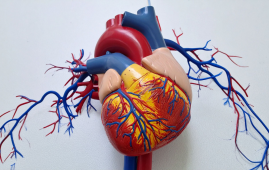

Previous research has indicated that both childhood behavioral difficulties and poor mental health are strongly connected with sleep disturbances; however, their long-term relationship has received little attention. A new study published in JAMA Network Open investigates the natural history of these phenomena and their interactions in children.
What causes behavioral and emotional problems in children?
Emotional and behavioral difficulties (EBDs) in preschool children, both past and present, significantly contribute to mental health problems in children and adolescents. Previous research has indicated that approximately 50% of these youngsters continue to display these difficulties one year after they are first recognized.
Despite the positive outcomes associated with EBD treatment, a variety of barriers, including a lack of highly trained professionals, high costs, social stigma associated with EBDs, and a lack of early intervention services, prevent children from receiving adequate care. As a result, new strategies for preventing and treating EBDs in early infants remain critical.
Poor sleep can be linked to a variety of emotional and problematic behaviors in children; however, the best intervention is unknown. This prompted the current study’s researchers to investigate the links between sleep disorders and EBD resolution.
What did the study on Behavioral difficulties show?
The researchers examined data from the Shanghai Children’s Health, Education, and Lifestyle Evaluation-Preschool (SCHEDULE-P), a two-year prospective cohort study of preschool-age children in Shanghai, China. The current study included almost 17,000 children aged three to four who started junior kindergarten in November 2016. When the study began, over 28% of the participants had EBDs, and over 41% had reported sleep problems.
While 10% of the children’s EBDs remained constant, roughly 20% of them resolved. Although around 66% of children were not diagnosed with EBDs, more than 10% developed new EBDs over the study period.
The prevalence of EBDs reduced to 19% when the youngsters graduated. This translates to a decrease in EBDs in pre-schoolers from more than 25% to less than 20%.
Sleep problems were observed in approximately 32% of children. Night waking, parasomnias, and sleep-disordered breathing (SDB) were the most common types of sleep disturbances. The prevalence of various types of sleep disorders also varied significantly between entry and graduation points.
Other risk factors for non-resolution of EBDs or new EBDs besides sleep disturbance included excessive screen time and being cared for by someone other than the parent at the time of school enrollment. Overweight children, children with divorced parents, and children who slept more than nine hours per night were more likely to develop new EBDs.
If the mothers were better educated or the children hailed from more affluent homes, received better care, spent more time with their parents, and had emotionally stable mothers, EBDs were more likely to resolve.
There was a significant correlation between better sleep and improved conduct and emotional regulation. 35% of children with EBDs at enrollment remained to have these difficulties at graduation. 50% of children with sleep disorders continued to have disturbed sleep after leaving preschool.
Children with new sleep disruptions were less likely to have resolved their EBDs once potential confounding factors were included. Furthermore, when compared to those with superior sleep patterns, the likelihood of resolution reduced by 50%. Similarly, students who continued to sleep poorly from enrollment to graduation were half as likely as those who slept well to have repaired their EBDs.
Children with new or persistent sleep difficulties were more than twice as likely as good sleepers to develop new EBDs. This risk was larger in those who had recently developed sleep problems.
Children with previously poor sleep quality who improved sleep metrics, such as resolved bedtime resistance or sleep anxiety, were about 40% and 50% more likely to have resolved EBDs than those who did not improve.
Children with new parasomnias or SDBs, on the other hand, had a 3.5-fold greater risk of developing new EBDs. With newly emerging night-waking patterns, this escalated to a 4.5-fold higher risk. Thus, both resolved and new EBDs exhibit a temporal relationship with various types of sleep disruptions.
What are the implications?
Sleep difficulties are linked to both new-onset and existing EBDs. Both new-onset and stable sleep disturbances were linked to a lower likelihood of resolved EBDs and a higher risk of developing new EBDs. Children who improved or always slept well, on the other hand, were more likely to have their EBDs resolved.
Once EBDs appear at the preschool graduation year, children may be not psychologically and socially ready for the next educational step.”
Sleep deprivation or disruption can have an impact on emotional and social well-being via a variety of core pathways. To prevent and treat sleep disturbances in this vulnerable age range, rigorous screening is required.
Successful parental sleep management may help improve both sleep disturbances and EBDs.”
For more information: Deng, Y., Zhang, Z., Giu, Y., et al. (2023). Sleep disturbances and emotional and behavioral difficulties among preschool-aged children. JAMA Network Open. doi:10.1001/jamanetworkopen.2023.47623.
more recommended stories
 Fat-Free Mass and Brain Outcomes in Preterm Babies
Fat-Free Mass and Brain Outcomes in Preterm BabiesEarly Fat-Free Mass May Hold the.
 How Hormones Shape Dopamine-Driven Learning
How Hormones Shape Dopamine-Driven LearningNYU Study on Hormones and Cognitive.
 Protein Pair Guides Chromosome Alignment in Mitosis
Protein Pair Guides Chromosome Alignment in MitosisKey Points A joint research team.
 Intensive mind-body retreat rapidly alters brain function
Intensive mind-body retreat rapidly alters brain functionAn intensive mind-body retreat combining meditation,.
 Citrus and Grape Compounds Help Prevent Type 2 Diabetes
Citrus and Grape Compounds Help Prevent Type 2 DiabetesA new clinical trial highlights the.
 Personalized Pain Care Transforms Parkinson’s Treatment
Personalized Pain Care Transforms Parkinson’s TreatmentNew UniSA research underscores the urgent.
 Genetic Diversity Explains Obesity Risk Differences
Genetic Diversity Explains Obesity Risk DifferencesCross-ancestry Study Identifies Novel Obesity Genes.
 Meniscal Tear and OA Pain Improved by Home Exercise
Meniscal Tear and OA Pain Improved by Home ExerciseHome Exercise Proves Effective for Knee.
 AI ECG Model Outperforms Standard STEMI Triage
AI ECG Model Outperforms Standard STEMI TriageNovel AI ECG Model Outperforms Standard.
 New Software Transforms Real-Time Pathogen Surveillance
New Software Transforms Real-Time Pathogen SurveillanceReal-Time Pathogen Surveillance Software Transforms Environmental.

Leave a Comment